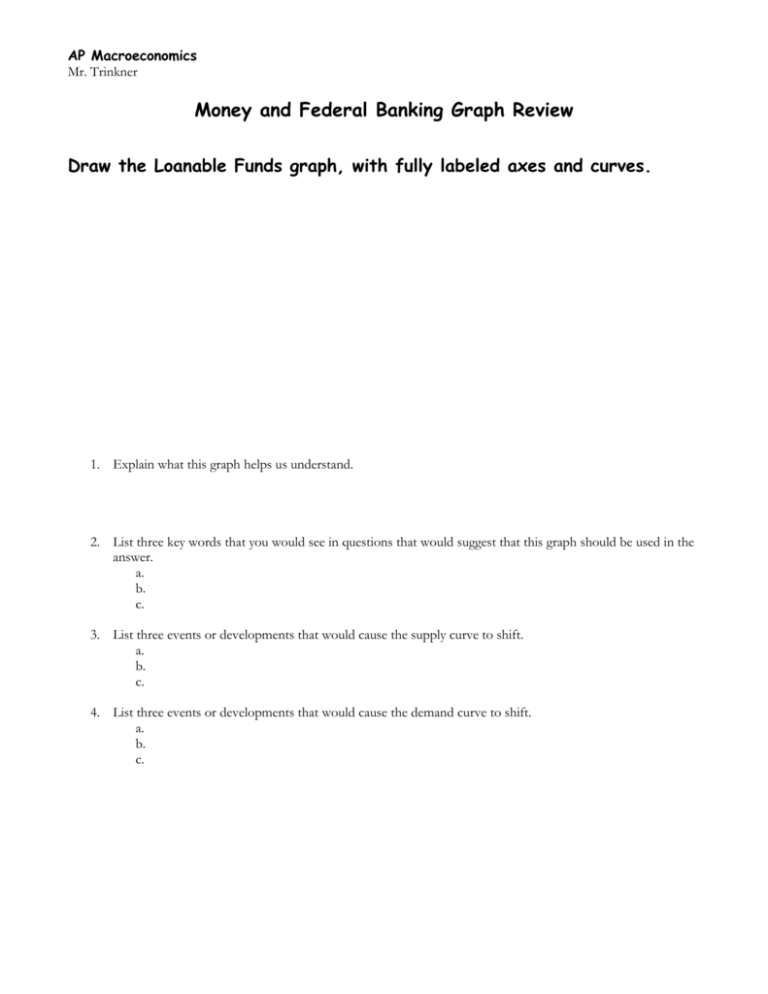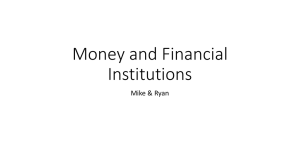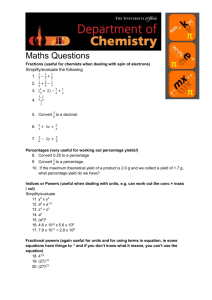AP Macroeconomics
advertisement

AP Macroeconomics Mr. Trinkner Money and Federal Banking Graph Review Draw the Loanable Funds graph, with fully labeled axes and curves. 1. Explain what this graph helps us understand. 2. List three key words that you would see in questions that would suggest that this graph should be used in the answer. a. b. c. 3. List three events or developments that would cause the supply curve to shift. a. b. c. 4. List three events or developments that would cause the demand curve to shift. a. b. c. Draw the Bond Market graph, with fully labeled axes and curves. 1. Explain what this graph helps us understand. 2. What is a bond? Why do companies and government sell them? Why do people buy them? 3. How do bond prices affect their interest rates? Why is this the case? 4. How do US bond prices and interest rates affect the value of US currency? 5. List three key words that you would see in questions that would suggest that this graph should be used in the answer. a. b. c. 6. List three events or developments that would cause the supply curve to shift. a. b. c. 7. List three events or developments that would cause the demand curve to shift. d. e. f. Draw the Money Market graph, with fully labeled axes and curves. 1. Explain what this graph helps us understand. 2. Why does the MS curve slope the way it does? Which organization controls it? 3. How does the Y axis differ from the Loanable Funds graph? Why does it differ? 4. What is the name of the rate that the Fed controls? If the Fed decides to lower this interest rate, how does it cause the rate to fall? What Fed committee makes the decision to raise or lower this rate? 5. List three key words that you would see in questions that would suggest that this graph should be used in the answer. a. b. c. 6. List three events or developments that would cause the supply curve to shift. a. b. c. 7. List three events or developments that would cause the demand curve to shift. a. b. c. Draw the Foreign Exchange graph, with fully labeled axes and curves. 1. Explain what this graph helps us understand. 2. List three key words that you would see in questions that would suggest that this graph should be used in the answer. a. b. c. 3. List three events or developments that would cause the supply curve to shift. a. b. c. 4. List three events or developments that would cause the demand curve to shift. 1. 2. 3. 5. For this graph, why do both curves shift when an event influences the graph? Putting it all together! 1. Draw an aggregate demand and supply graph to show the economy in a deep recession. What action should the Fed take, regarding interest rates, to bring the economy back to long-term equilibrium? Show the resulting shift on the graph above. 2. Draw the Money Market graph to show the effect of the Fed’s decision on interest rates. 3. Draw the Bond Market graph to suggest the likely effect of the Fed’s decision on bond prices. (Hint: bond prices will change so that their interest rates parallel the change suggested in the Money Market graph.) 4. Draw the Loanable Funds graph to suggest the likely effect of the Fed’s decision on interest rates on loans. (Hint: lenders and borrowers will probably adjust so that loans’ interest rates parallel the change caused by the Fed’s actions.) 5. Draw the Foreign Exchange market graph to show the effect of the Fed’s decision on the value of the dollar. Putting it all together #2! 1. Draw an aggregate demand and supply graph to show the economy in a inflationary gap. What action should the Fed take, regarding interest rates, to bring the economy back to long-term equilibrium? Show the resulting shift on the graph above. 2. Draw the Money Market graph to show the effect of the Fed’s decision on interest rates. 3. Draw the Bond Market graph to suggest the likely effect of the Fed’s decision on bond prices. (Hint: bond prices will change so that their interest rates parallel the change suggested in the Money Market graph.) 4. Draw the Loanable Funds graph to suggest the likely effect of the Fed’s decision on interest rates on loans. (Hint: lenders and borrowers will probably adjust so that loans’ interest rates parallel the change caused by the Fed’s actions.) 5. Draw the Foreign Exchange market graph to show the effect of the Fed’s decision on the value of the dollar. Putting it all together #3! 1. Draw an aggregate demand and supply graph to show the economy at long-term equilibrium. Imagine that a stock market crash takes place, decreasing savings, increasing the public’s fear of owning stock, and decreasing overall consumer confidence. Show the results of this event on the graph above. What happens to price level, output, and employment? 2. Draw the Money Market graph to show the effect of the public’s fear or owning stock. (Hint: if they don’t want to hold stock, what do they want to hold?) For this graph, assume that the Fed holds the Money Supply constant. What is the effect on interest rates? 3. Draw the Money Market graph to show the likely course of action by the Fed, if they want to keep interest rates at the same level they were at before the stock crash. 4. Draw the bond market graph to show the likely effect on bond prices of the stock market crash. (Hint: if stocks are no longer attractive to savers, bonds usually become more attractive.) 5. Draw the Foreign Exchange market graph to show the effect of the change in bond prices on the dollar.







